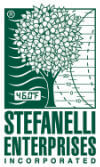In-Transit Temperature Recorders FAQ
In-Transit temperature recorders are single use, low cost, and reliable time and temperature recording instruments. Recorders are used to accompany temperature sensitive commodities during transportation. Recorders will document elapsed time and the temperatures a commodity had been exposed to during the voyage or transfer. The mechanical type of recorder will produce a paper chart. This “strip chart” will be removed from the mechanical recorder after breaking a factory seal. The digital type of recorder will display numerical information on the face of the unit. Digital recorders will further print graphs and numerical values in real time when connected and downloaded to a personal computer. Recorders are sometimes used for tracking temperature history during storage.
The use of temperature recorders provides all parties involved (shipper, carrier, receiver) with a continuous description of the transit conditions for any type of temperature sensitive product, whether they are shipped via air freight, long haul trucks, rail car, insulated container or ocean containers.
The resulting data with temperature recordings can then be used:
- To substantiate claims where temperature management is in question.
- As validation for quality assurance purposes, thereby confirming your product is in the condition it should be and has not been exposed to temperatures that may have altered its properties and/or shorten its shelf life.
When using the In-Transit Temperature recorder, we recommend the following:
Each recorder has a bar coded serial number; a case of 20 recorders would have 20 consecutive serial numbers. Shippers should write on their Bill Of Lading the serial number of the recorder that is being used for that particular shipment. For traceability there are three places where the same serial number should appear: on the shipping document, on the recorder chart, and on the recorder itself.
The shipping document should be filled out accurately and the recorder must be started or activated. One copy of the shipping document should be removed from the recorder; the shipper will keep this document for their records. When using a mechanical recorder, all information that is filled out on the shipping document will have automatically been transferred to the chart stub underneath, as it is made of pressure sensitive carbonless NCR paper.
Through a small window, located on the side of a mechanical recorder, you will see motor gears moving to confirm that a started recorder has been activated. For digital recorders you will se a flashing LED at start. The recorder is then placed with the load, as close to the center of the load as possible. It can be fastened to the wall of a truck/container just above the load line, or, preferably, it can also be secured to a box at the top of a pallet. Each recorder has an adhesive strip for this mounting purpose. When securing the recorder on top of a box/pallet you will avoid the possibility of the recorder falling to the floor should a sudden jarring of the shipment take place.
At the time a shipment reaches it’s destination, the recorder is retrieved from the load and available for reading. Mechanical recorders are read by breaking the tamper evident seal and removing the chart from inside. Information can be viewed on a digital recorder simply by pressing the “F” or “C” button. Connecting a digital recorder to a personal computer will provide additional information. Recorder charts will have all the pertinent data as to what temperature the product had been exposed to during the trip. This chart is then retained as evidence in case you have a problem and need to file a claim due to poor temperature management. Furthermore, each Recorder has a unique serial number for reference when conducting a detailed Post Trip Calibration Report. The Post Trip Calibration Report may be necessary to further support the accuracy of the temperature data obtained from the specific unit used for this trip. This report can then be used as additional evidence to further support your claim.
If there are no problems with the product upon arrival and temperature data on the chart is satisfactory, the chart should then be filed as part of the receiving documents. Used recorders can be recycled, please contact our office for recycling information.
In the event of a claim situation it is important that the Temperature Recorder be retained along with the Strip Chart or photocopy of the Chart. Both the Recorder and the Chart will be needed to perform a Post Trip Calibration Report.
In a claim situation call Stefanelli Enterprises for assistance in following proper procedure:
(800) 332-7833 Toll Free Within The United States
(954) 458-4023 Main Office Number
(954) 458-4024 FAX
